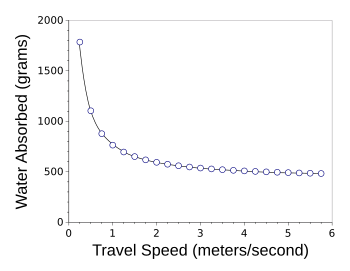Walking in the Rain
September 4, 2017
Rain is both a
blessing and a
curse to
humans. We have its welcome relief from
drought, but also its
devastation as it accompanies
hurricanes and
monsoons. Many
movies have "rain" in their titles, including the memorable
Singin' in the Rain (1952,
Gene Kelly and
Stanley Done, directors),[1]
Rain Man (1988,
Barry Levinson, director),[2] and
Purple Rain (1984,
Albert Magnoli, director).[3] I still remember the 1961 song, "
Raindrops," by
Dee Clark.[4]
.jpg)
Hurricane Katrina, at 12:00 UTC, August 28, 2005.
Hurricane Katrina was a category 5 storm, there being only three other category five storms to hit the US in recorded history.
United States Naval Research Laboratory GOES-12 Satellite image no. 050828-N-0000W-002, via Wikimedia Commons
Our
apartment when I was a
child was just a short
walking distance from the
home of my
maternal grandmother; and, in those days, it was thought to be safe for
children to roam their
neighborhood alone. I would often walk to her house, and on one trip it began to rain. For that reason, I
ran as fast as I could to get there as dry as possible.
When I arrived, I explained this to my grandmother, but she said that running didn't help that much. She was speaking from the experience of someone who had spent most of her early life in a time when walking was the principal means of travel. My
theory was that running made the trip shorter, so I was in the rain for a shorter time. I remembered this event during a recent rainstorm, and I was inspired to run a
simulation. As it turned out, the simulation was so easy that I did it in a
spreadsheet.

My maternal grandmother, shown here in her wedding photo, was born in 1895, more than a decade before the Wright Brothers made their first flight on December 17, 1903.
She lived to see Neil Armstrong walk on the Moon on July 21, 1969.
Rain, itself, is easy to
quantify. We measure rainfall in
inches per
hour (at least in the
US), and rain
droplets fall at a
terminal velocity that depends on their size; and, also on their
mass, which is a
function of their size. In a simplified form, the terminal velocity
vt is given as

where
m is the mass of the falling object,
g is the
gravitational acceleration (9.8 m/s/s),
Cd is the
drag coefficient (0.47 for a
sphere),
ρ is the
fluid density (about 0.00125 g/cc for
room temperature air), and
A is the
projected area of the object (πr
2 for a sphere when r is the
radius). Raindrops have a typical
diameter of 1.5 mm, and
water has a density of about 1 g/cc, so these
parameters are easily calculated:
drop radius = 0.00075 m
projected area = 1.767E-06 m2
volume = 1.767E-09 m3
mass = 0.001767 g
g = 9.8 m/s/s
ρ = 1250 g/m3
Cd = 0.47
Vt = 5.776 m/sec
For a particular rainfall rate, it's easy to
calculate the density of water droplets
ρr in the air during a rainstorm.
Rainfall rate = 1.00 inch/hr
Rainfall rate = 2.54 cm/hr
Rainfall volume = 25400 ml/m2/hr
Rainfall mass = 7.06 g/m2/sec
velocity = 5 m/sec
ρr= 1.4 g/m3
Now that we have the physical properties of rainfall worked out, we need to know the affected
surface areas of a person. If you're walking into the rain, you're collecting water on your frontal area, and when you're standing in the rain, you're collecting water on the area of your
head,
shoulders, and a little
abdomen and
backside bulge.
To get an estimate of frontal area, I went to a
classical source; namely,
Leonardo da Vinci's Vitruvian Man, shown in a simplified form below.
.png)
Leonardo da Vinci's Vitruvian Man (1492) in a simplified form.
From the collection of the Gallerie dell'Accademia (Venice, Italy). Photo by Luc Viatour, via Wikimedia Commons.
At one time, to get the area of objects, such as the
area under a curve, you would cut out the image,
weigh it on an
analytical balance, and
ratio that weight to the weight of a
square of the same
paper of a known area. I did this many times in my
student days; but, today, we have
computers. What I used was the ever useful, and free,
GIMP image processing program to convert the image to full black on a white background and save it as a
*.pbm file.
A *.pbm file is a file of the
ASCII characters, "1," and "0," in which a "1" is a black
pixel, and a "0" is a white pixel. A very trivial
C language program (
here) counts the ones and ratios them to the sum of the ones and zeros; that is, it finds the
fraction of the image that's black. Since I
cropped the height of the image to be the height of the man, assumed to be 70 inches, I was able to calculate the frontal area as 951
square inches = 0.61316
square meters.

I checked the frontal area of this
15th century idealized man with a modern example from
NASA.[5] NASA, of course, is very concerned with how its
astronauts fit into their
space suits,
seats, and
spacecraft. Doing this same image processing with an image on its
website gave a frontal area for a man of 911 square inches = 0.587741 square meters, which is quite close. For my calculations, I used a frontal area of 0.6 square meters. Likewise, using NASA data, I created a rough
model of the top area of a standing man, as shown. Image analysis gave an area of 0.0965 square meters.
Now, we have all the data we need for the simulation, which I programmed in the
Gnumeric spreadsheet application (Gnumeric source
here. *.xls file for MS Exel or LibreOffice,
here). The principle of the simulation is simple - The longer you're in the rain, the more water falls on top of you; but, no matter what your travel rate is, you still soak up all the water in the corridor between your starting point and your destination.
The simulation is for 500 meters travel at rates of 0.25 - 5.75 meters/second in a one-inch-per-hour rainfall. As you can see from the
graph, walking at
1.4 meters per second doesn't get you that much wetter than running at 5.75 meters per second. All this presumes that you're not wearing any
rain gear, and you, and your clothing, are perfectly
absorbent.

Walk, don't run.
A normal walking pace is 1.4 meters per second. Running, rather than walking, in the rain doesn't make you much less wet.
(Graphed using Gnumeric)
![]()
References:
- Singin' in the Rain (1952, Stanley Donen, and Gene Kelly, directors) on the Internet Movie Database.
- Rain Man (1988, Barry Levinson, director) on the Internet Movie Database.
- Purple Rain (1984 Albert Magnoli, director) on the Internet Movie Database.
- Dee Clark, "Raindrops (1961)," YouTube Video, June 30, 2009.
- Man-Systems Integration Standards, Revision B, July 1995, Volume I, Section 3, NASA Anthropometry And Biomechanics Web Site.
Linked Keywords: Rain; blessing; curse; human; drought; devastation; tropical cyclone; hurricane; monsoon; film; movie; Singin' in the Rain; Gene Kelly; Stanley Done; Rain Man; Barry Levinson; Purple Rain; Albert Magnoli; Raindrops (Dee Clark song); Dee Clark; Hurricane Katrina; Coordinated Universal Time; UTC; category 5 Atlantic hurricane; United States Naval Research Laboratory; GOES-12 Satellite; Wikimedia Commons; apartment; child; walking; home; grandparent; maternal grandmother; child; children; neighborhood; running; ran; theory; computer simulation; spreadsheet; wedding; photograph; photo; decade; Wright Brothers; Wright Brothers flights of 1909; first flight on December 17, 1903; Neil Armstrong; First Moon walk; quantification (science); quantify; inch; hour; United States; US; drop; droplet; terminal velocity; mass; function; gravity of Earth; gravitational acceleration; drag coefficient; sphere; fluid; density; room temperature; atmosphere of Earth; air; projected area; radius; diameter; water; parameter; calculation; calculate; milliliter; ml; surface area; head; shoulder; abdomen; buttocks; backside; classical; Leonardo da Vinci; Vitruvian Man (1492); Gallerie dell'Accademia (Venice, Italy); Luc Viatour; integral; area under a curve; weight; weigh; analytical balance; ratio; square; paper; student; computer; GIMP image processing program; netpbm format; *.pbm; ASCII characters; pixel; C programming language; omputer program; pbm area.c; fraction; cropping (image); crop; square inch; square meter; 15th century; scientific modelling; idealized; NASA; astronaut; space suit; seat; spacecraft; website; model; Gnumeric spreadsheet application; rain walk.gnumeric; rain walk.xls; artesian coordinate system; graph; preferred walking speed; 1.4 meters per second; raincoat; rain gear; absorption (chemistry); absorbent; Walk, don't run (Instrumental).